Exhibit Planter 3
Art Inspired by Orchids
Arte inspirado por las orquídeas
Botanical art and illustration provided women with a path into the scientific world at a time when there were few female scientists. Women who had the talent, opportunity, and means became professional botanical artists and illustrators. Although they were often overlooked and underappreciated in their field, women made lasting contributions to our understanding of botany.
Learn about three women whose art transformed our view of orchids.
El arte y la ilustración botánicos ofrecieron a las mujeres una vía hacia el mundo científico cuando en este era poca la presencia femenina. Las que tenían talento, oportunidad y medios se convirtieron en artistas e ilustradoras botánicas profesionales. Aunque en general eran ignoradas y poco apreciadas en su campo, las mujeres hicieron aportes perdurables al conocimiento de la botánica.
Aprende acerca de tres mujeres que con su arte transformaron nuestra visión de las orquídeas.
Orchids have inspired female artists throughout history and across cultures.
Las orquídeas han inspirado a las mujeres artistas a través de la historia y las culturas.
Orchids in Chinese Art
Orchids have a long history in Chinese art. Cymbidiums, also known as boat orchids, have been cultivated in China for hundreds of years. They became a popular subject for Chinese artists starting in the Song dynasty (960–1279).
Las orquídeas en el arte chino
Las orquídeas tienen una larga historia en el arte de China. Los cimbidios, también conocidos como orquídeas barco, se hancultivado allí por cientos de años. Se convirtieron en tema popular entre los artistas chinos a partir de la dinastía Song (960–1279).
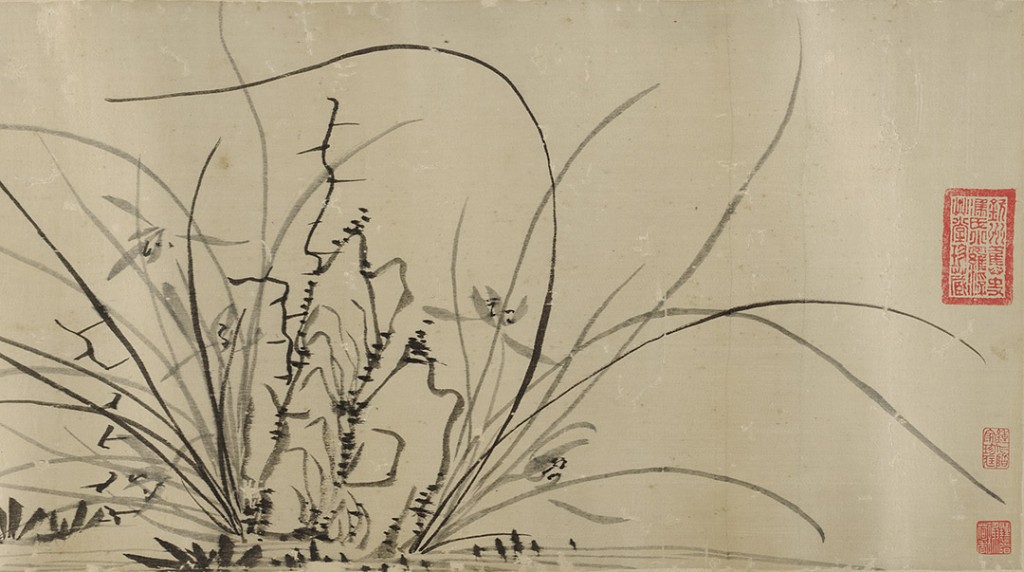
Orchids and Rocks by Gu Mei, 1644
Gu Mei/Arthur M. Sackler Gallery, Smithsonian Institution, Washington, D.C.: Gift of Arthur M. Sackler, S1987.269 (detail)
Orquídeas y piedras por Gu Mei, 1644
Gu Mei/Galería Arthur M. Sackler, Institución Smithsonian, Washington D.C.: Donación de Arthur M. Sackler, S1987.269 (detalle)
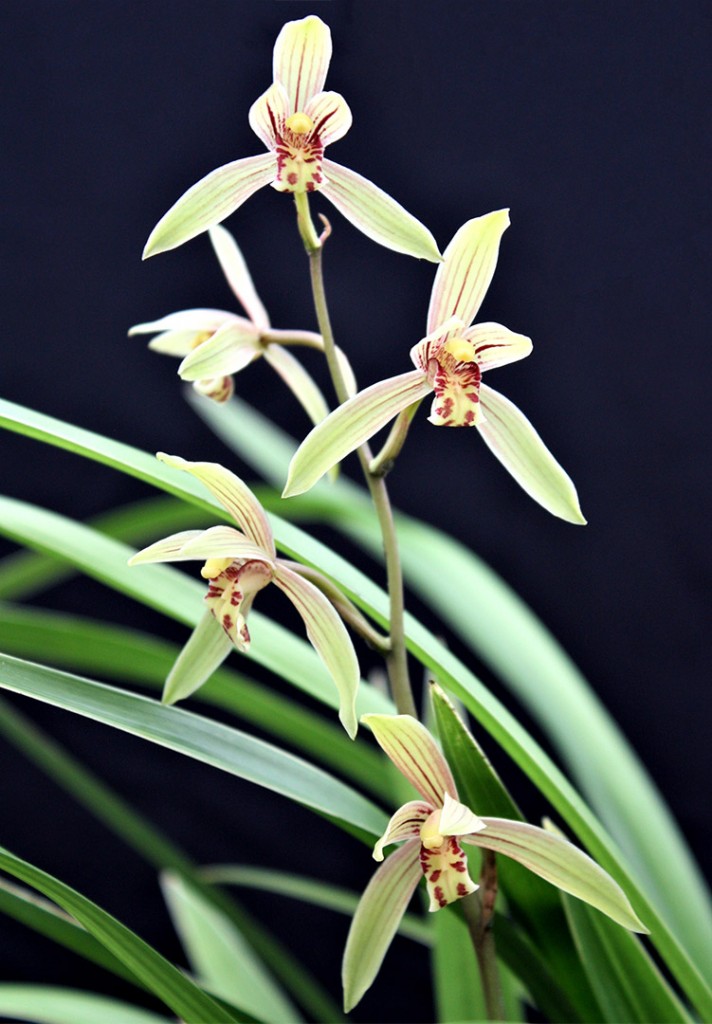
Cymbidium ensifolium ‘Yu Hua’
Courtesy Smithsonian Gardens, Alexandra Thompson, photographer
Cymbidium ensifolium ‘Yu Hua’
Cortesía de Jardines Smithsonian, Alexandra Thompson, fotógrafa
Gu Mei
Poet and Painter
Chinese courtesan Gu Mei (1619–1664) defied traditional gender barriers to become a respected poet and painter. She was famous for her paintings of orchids, which are featured in the collection of the Smithsonian’s National Museum of Asian Art.
Gu Mei
Poeta y pintora
La cortesana china Gu Mei (1619–1664) desafió las barreras de género tradicionales para convertirse en una respetada poeta y pintora. Fue famosa por sus pinturas de orquídeas, que figuran en la colección del Museo Nacional de Arte Asiático del Smithsonian.
Just as she fashions her eyebrows, she fashions orchids and calligraphy;
— Song lyrics dedicated to Gu Mei by Fan Wenguang (d. 1651)
fragrance stealthily pervades the shadow of her brush.
Full of talent, full of wit, and also full of the artist’s power . . .
Con el mismo primor que sus cejas, traza las orquídeas y la caligrafía;
— Canción dedicada a Gu Mei por Fan Wenguang (m. 1651)
una fragancia sigilosa permea la sombra de su pincel.
Posee talento e ingenio, y posee también el poder de los artistas…
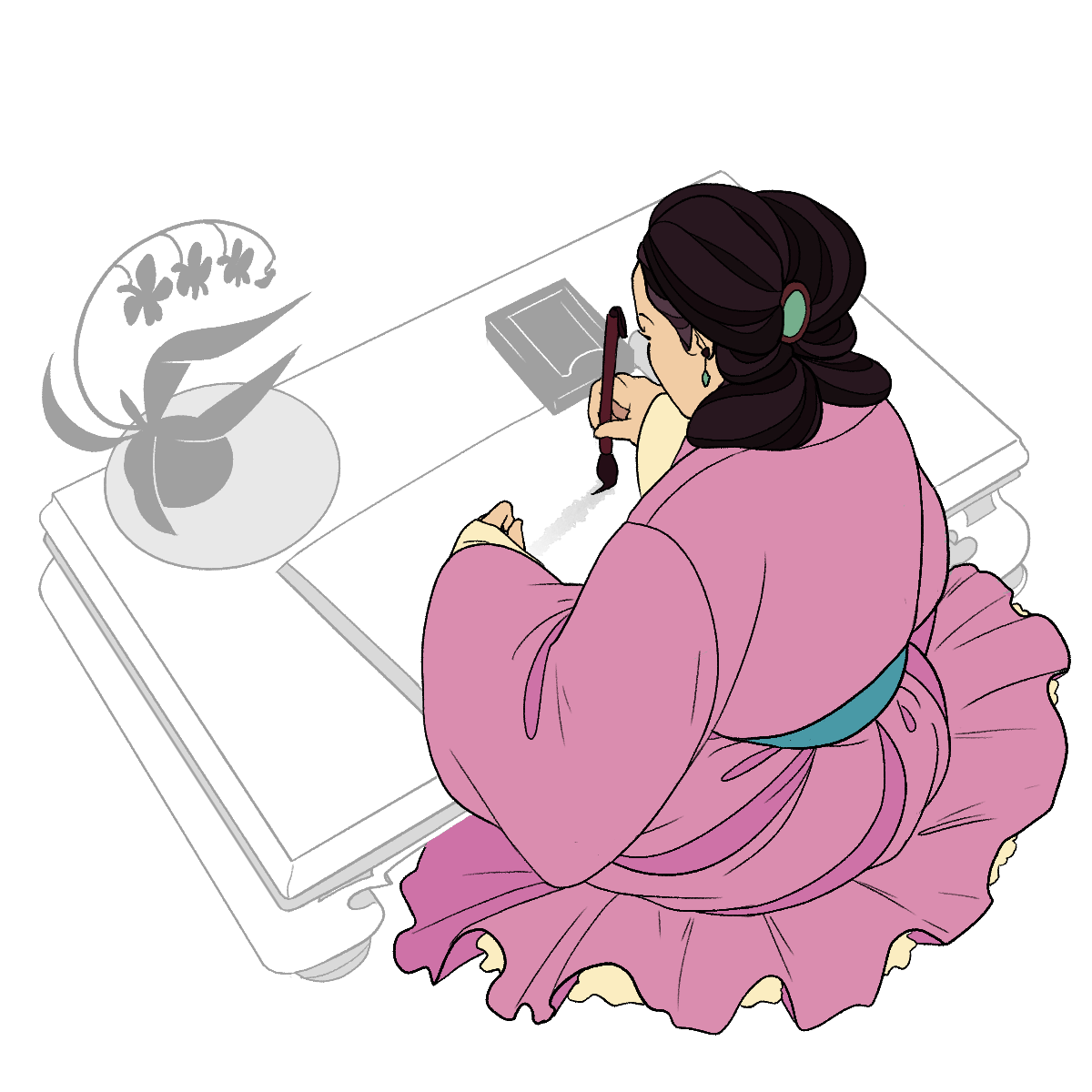
Gu Mei
Escher Cattle
La artista china Gu Mei
Escher Cattle
Georgia O’Keeffe
American Modernist
Georgia O’Keeffe (1887–1986) was a leader of American Modernism who paved the way for other female artists. Flowers are a common theme in her art. She painted many species, including calla lilies, irises, petunias, poppies,and orchids.
Georgia O’Keeffe
Modernista estadounidense
Georgia O’Keeffe (1887–1986)fue líder del modernismo estadounidense y allanó el camino para otras mujeres artistas. Las flores son tema común en su obra. Pintó muchas especies, como calas, lirios, petunias, amapolas y orquídeas.
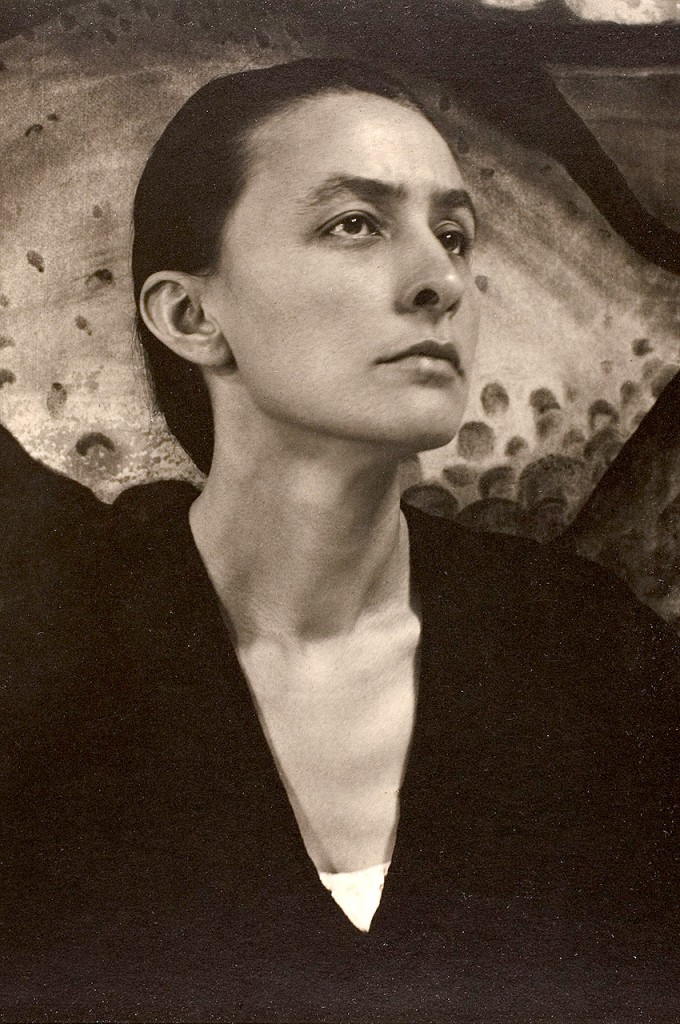
Portrait of Georgia O’Keeffe by Alfred Stieglitz, 1918
Alfred Stieglitz; Georgia O’Keeffe, Made 1918; The Art Institute of Chicago
Retrato de Georgia O’Keeffe por Alfred Stieglitz, 1918
Alfred Stieglitz Georgia O’Keeffe, hecho en 1918; Instituto de Arte de Chicago
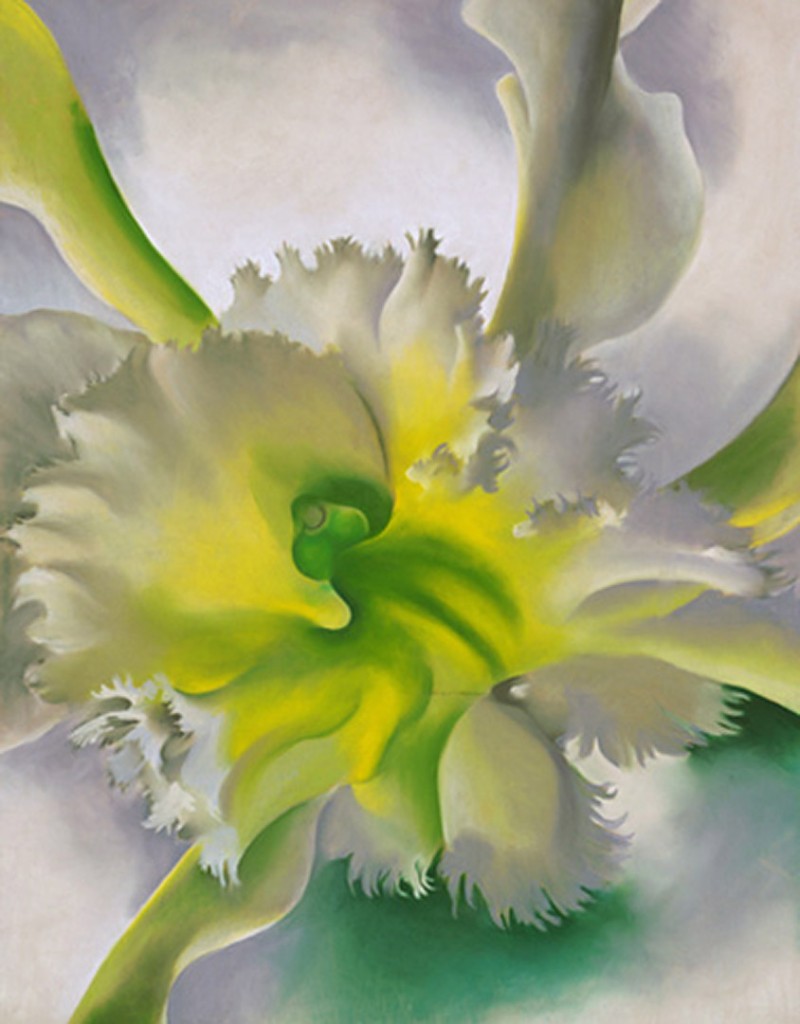
An Orchid by Georgia O’Keeffe, 1941
© 2020 The Museum of Modern Art/Artists Rights Society (ARS), New York
Orquídea por Georgia O’Keeffe, 1941
©2020 The Museum of Modern Art/Artists Rights Society (ARS), Nueva York
When you take a flower in your hand and really look at it, it’s your world for the moment. I want to give that world to someone else.
— Georgia O’Keeffe
Si tomas una flor en la mano y la miras con atención, por ese instante se convierte en tu mundo. Quiero regalar ese mundo a alguien más.
— Georgia O’Keeffe
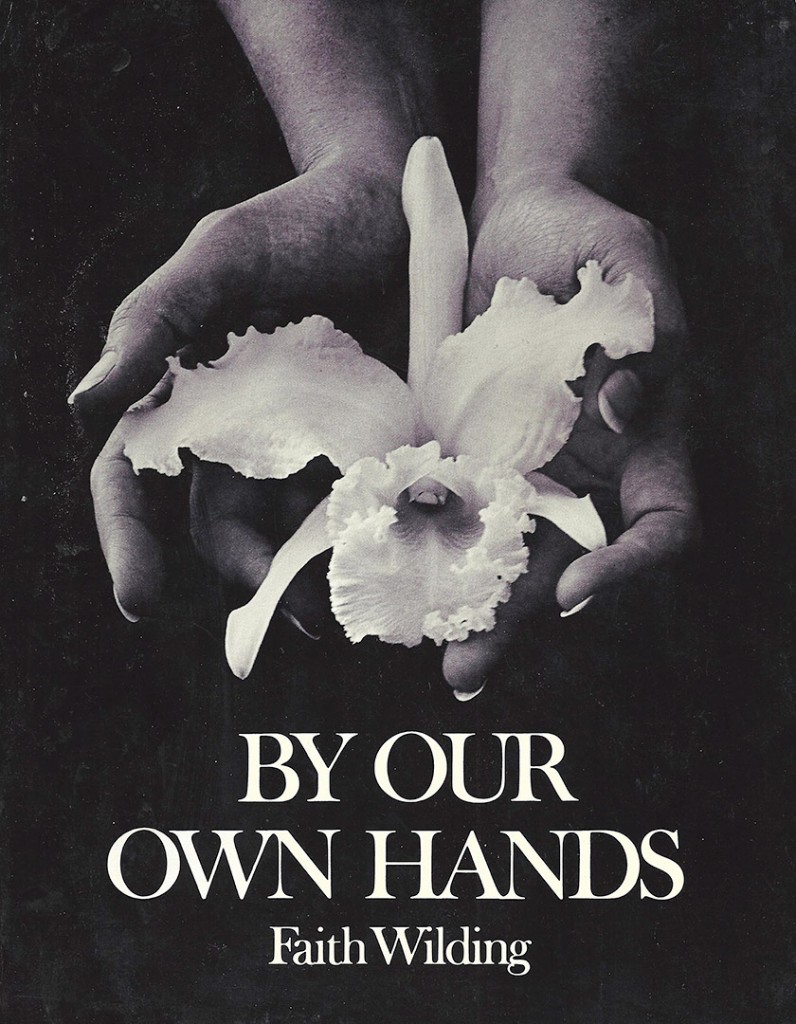
American artist Nancy Youdelman’s photograph of an orchid appears on the cover of By Our Own Hands, a 1977 book about the feminist art movement in California by Paraguayan American artist Faith Wilding.
Courtesy Smithsonian Institution Libraries
La artista estadounidense Nancy Youdelman fotografió la orquídea que figura en la portada de By Our Own Hands, libro de 1977 sobre el movimiento de arte feminista en California, escrito por la artista paraguaya-estadounidense Faith Wilding.
Cortesía de las Bibliotecas de la Institución Smithsonian
The Feminist Art Movement
In the 1970s, feminist artists and activists influenced by Georgia O’Keeffe adopted the orchid as a symbol of female empowerment and sexuality.
El movimiento de arte feminista
En la década de 1970, las artistas y activistas feministas influenciadas por Georgia O’Keeffe adoptaron la orquídea como símbolo delempoderamiento y la sexualidad de la mujer.
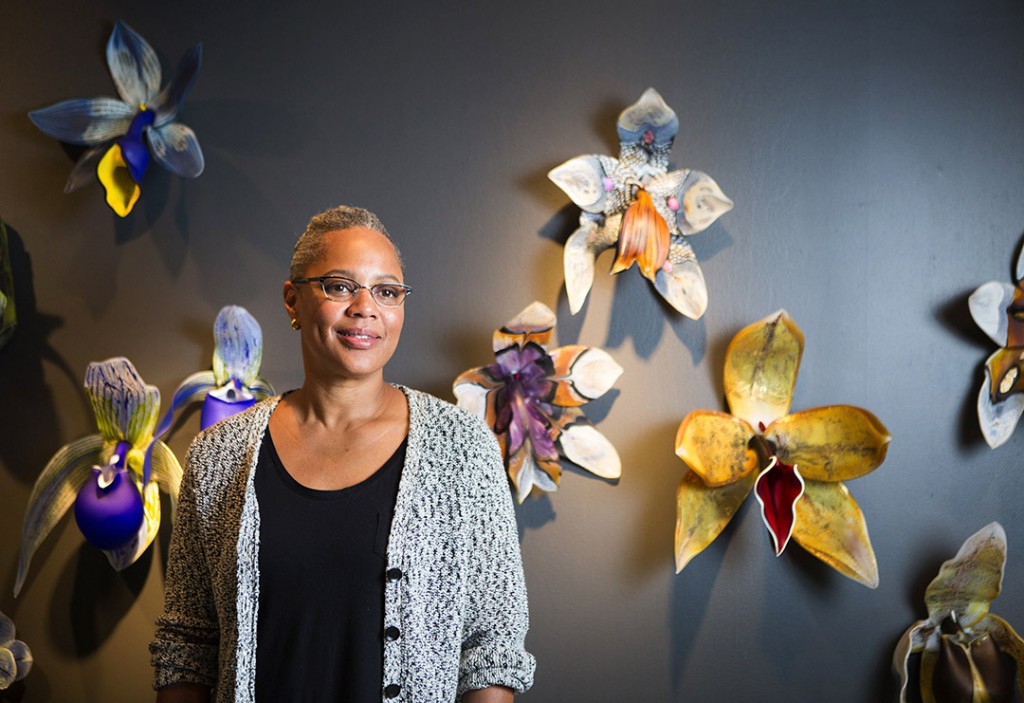
Moore has been making glass sculptures of orchids and other plants for over 30 years.
© Lindsey Wasson/The Seattle Times, 2015
Moore lleva más de 30 años haciendo esculturas de orquídeas y otras plantas en vidrio.
© Lindsey Wasson/The Seattle Times, 2015
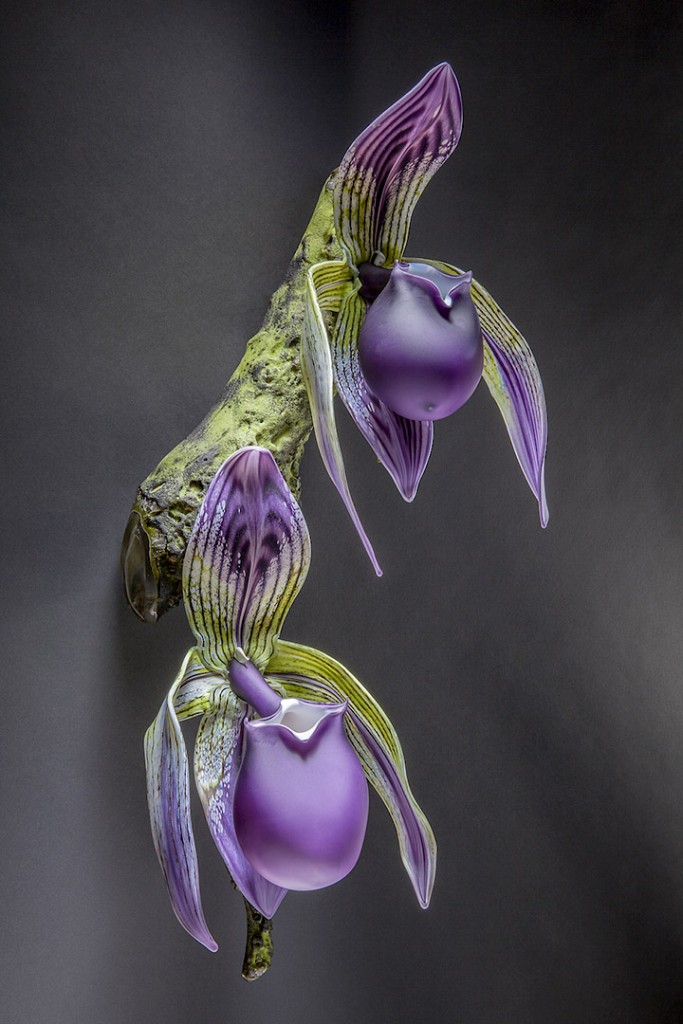
Moore’s orchid sculptures are inspired by orchids she saw during trips to Thailand, Costa Rica, and Washington’s Olympic Peninsula.
Purple Lady Slipper by Debora Moore
Courtesy Lynn Thompson
Moore inspira sus esculturas en orquídeas que ha visto al viajar por Tailandia, Costa Rica y la península Olímpica en Washington.
Zapatilla de dama morada por Debora Moore
Cortesía de Lynn Thompson
Debora Moore
Glassblowing Sculptor
American artist Debora Moore is known for her intricate, colorful glass sculptures, which combine traditional glassblowing skills with new techniques. Many of her sculptures depict orchids, which Moore describes as “a metaphor of the human condition in its tenuous and essential relationship with the earth.”
Debora Moore
Escultora de vidrio soplado
La artista estadounidense Debora Moore
es conocida por sus esculturas complejas y coloridas, que combinan destrezas tradicionales y técnicas nuevas del soplado de vidrio.
En muchas de ellas representa orquídeas,
las que describe como “una metáfora de lacondición humana en su tenue y esencial relación con la tierra”.
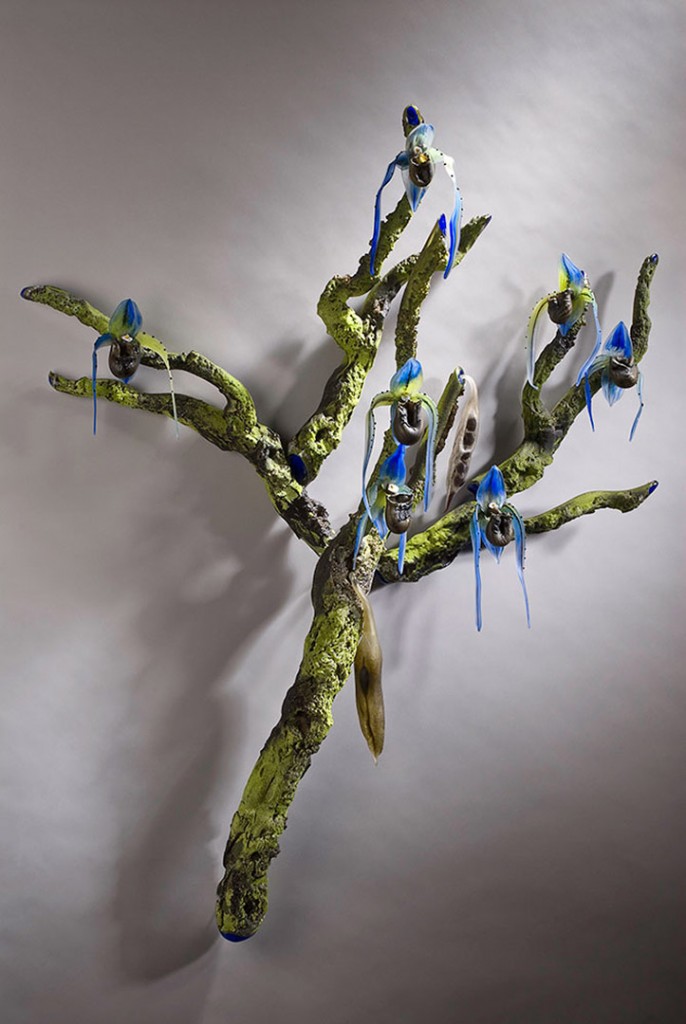
Blue Orchid Tree by Debora Moore
Courtesy Lynn Thompson
Árbol de orquídeas azules por Debora Moore
Cortesía de Lynn Thompson
The astounding variety within the orchid family provides endless opportunities for artistic expression with their vibrancy of color and elegance of form.
— Debora Moore
La asombrosa variedad dentro de la familia de las orquídeas, con sus vívidos colores y elegancia de formas, ofrece un sinfín de oportunidades de expresión artística.
— Debora Moore
